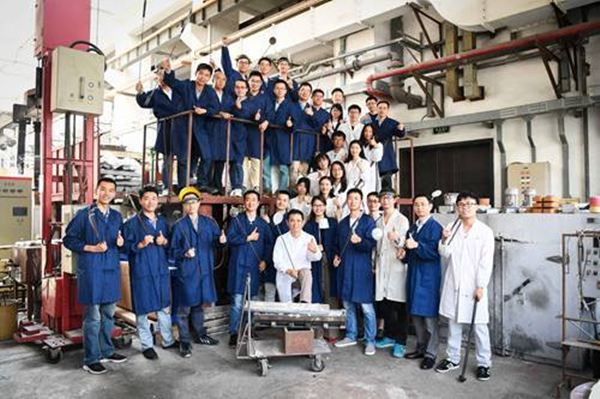Technology | China's independent research and development of new aviation materials to achieve "self generated" ceramics in aluminum
The research team of Shanghai Jiaotong University has developed new materials and cooperated with many enterprises to build production and application platforms, greatly promoting the development and landing of aerospace materials in China.
Recently, Professor Wang Haowei from the School of Materials Science and Engineering of Shanghai Jiaotong University has developed a super-strength nano-ceramic aluminum alloy, whose strength and specific stiffness are even higher than that of "space metal" titanium alloy, which will help bring aerospace, high-speed rail and other fields into a lighter and more energy-saving new material era.
As shown in the table, with the demand of practical application, the development of aerospace materials is gradually approaching to light weight and high strength. At present, aerospace structural materials mainly include aluminum alloy, titanium alloy, fiber composite and high-temperature structural materials.
In the application of structural materials for aerospace bodies, aluminum alloys have been flourishing for nearly 100 years. Especially since the end of 1980s, with the gradual formation of aircraft damage tolerance and durability design criteria, higher requirements have been put forward for the strength, fracture toughness, corrosion resistance, fatigue resistance and other comprehensive properties of materials. Aluminum alloy is an ideal structural material because of its light weight, easy processing, corrosion resistance and other advantages, and its specific strength is higher than that of many alloy steels.
Titanium is also an important structural metal developed in the 1950s. Compared with aluminum alloy, titanium alloy has better strength, corrosion resistance and heat resistance. In the 1950s and 1960s, the main task was to develop high-temperature titanium alloys for aero-engines and structural titanium alloys for airframes. At present, the multifunctional research and application of titanium alloys is also the focus of research in the aerospace field.
Compared with aluminum, steel and other metal structural materials, carbon fiber reinforced resin matrix composites have extremely high specific strength and stiffness, and are currently an ideal lightweight high-strength aerospace structural material. Compared with aluminum alloy, the weight reduction effect of aircraft structure made of carbon fiber composites can reach 20%~40%.
Although different materials can be used according to different requirements in the aerospace field, the extremely strict requirements for the performance and quality of aerospace materials, the complex product manufacturing technology and the high cost have seriously restricted the application and development of materials. Because the aircraft will fly under various extreme environmental conditions, the technical issues involved in its materials are very complex, which is the focus and hotspot of the research in the field of materials.
In order to further optimize the properties of existing materials, the team of Shanghai Jiaotong University began to study "mixing" ceramics into aluminum. In response, Professor Wang Haowei said that aluminum is very light, but its strength and hardness are not high; The hardness of ceramics is better than that of steel, so the combination of the two can produce aluminum matrix composites with light weight, high hardness, toughness and low fracture deformation.
Professor Wang Haowei said that the team finally adopted the "in-situ self-generation technology". Through melt control self-generation, the size of ceramic particles was reduced from tens of microns to nanometer, breaking through the application bottlenecks of the international traditional method of adding ceramic aluminum matrix composites, such as low plasticity and difficult processing.
It is reported that this nano-ceramic aluminum alloy is light in weight, has high stiffness, high strength, fatigue resistance, low expansion, high damping, high temperature resistance and other characteristics, and has been applied in aerospace, automobile, and advanced electronic equipment. Professor Wang Haowei said that at present, nano-ceramic aluminum alloy has been applied to key components such as Tiangong-1, Tiangong-2, quantum satellite and meteorological satellite.
It is understood that thanks to the cooperation of the People's Government of Huaibei City, Anhui Province, Shanghai Jiaotong University, Shanghai Junyao (Group) Co., Ltd., and Anhui Xiangbang Composite Materials Co., Ltd., the achievements of nano-ceramic aluminum alloy have finally been achieved.
In response, Liu Yangang, president of the Advanced Industrial Technology Research Institute of Shanghai Jiaotong University, said: "Today's Sifang cooperation will build a market-oriented operation platform conducive to the expansion and application of nano-ceramic aluminum alloy, and establish a complete system of material production, product design, manufacturing process, and use standards with independent intellectual property rights."
This time, the research team of Shanghai Jiaotong University has made breakthroughs in aerospace materials and their preparation technology, which undoubtedly has a strong leading and promoting role in modern material technology.

